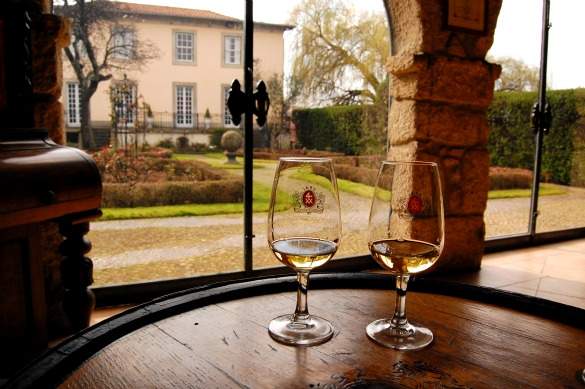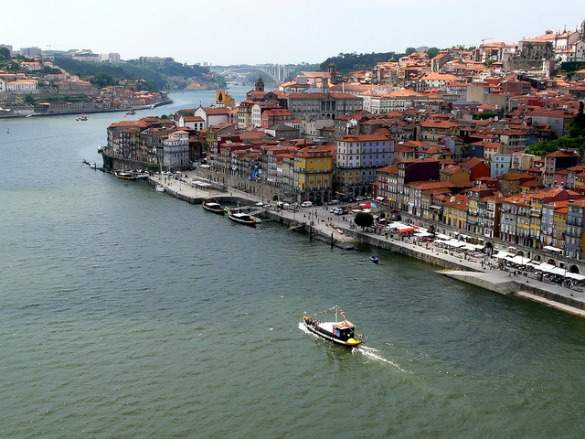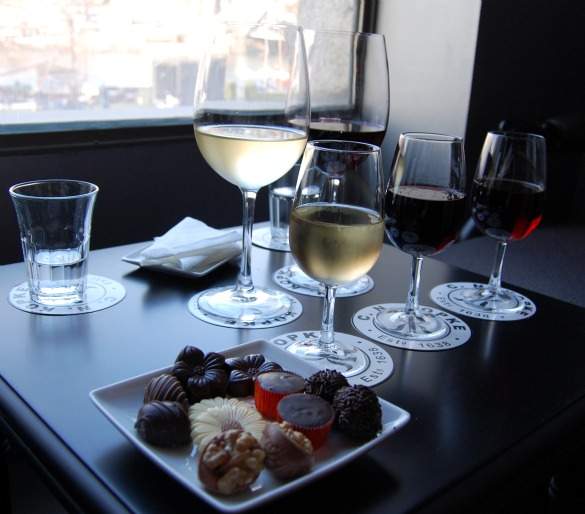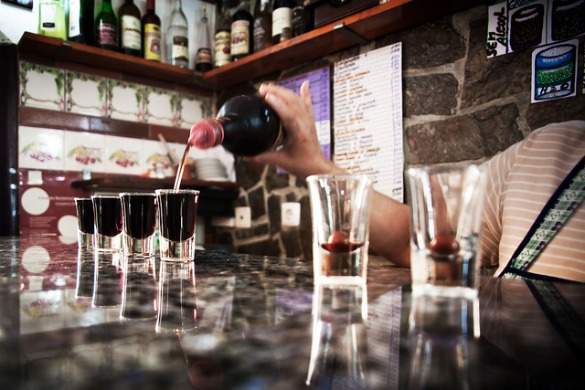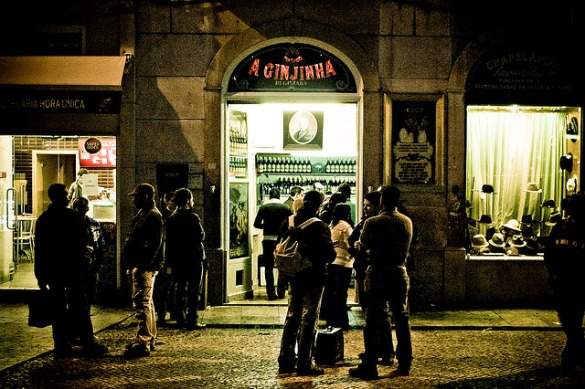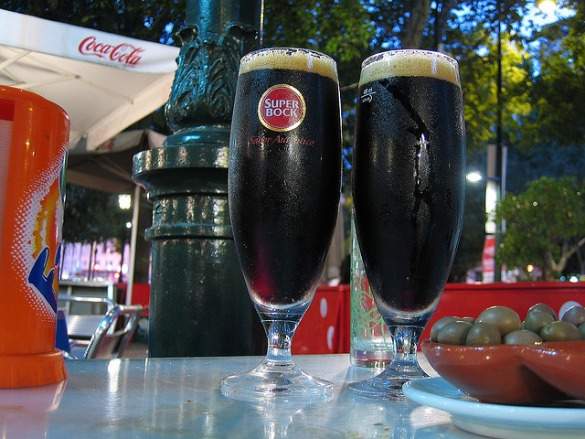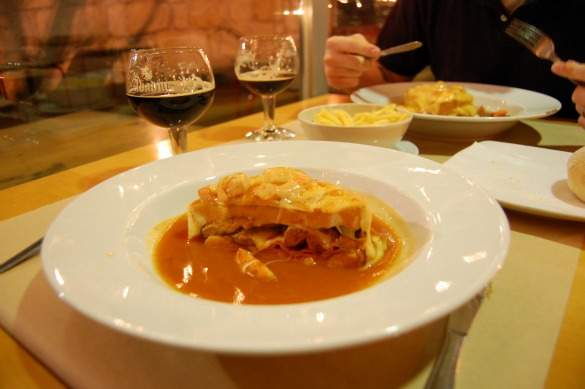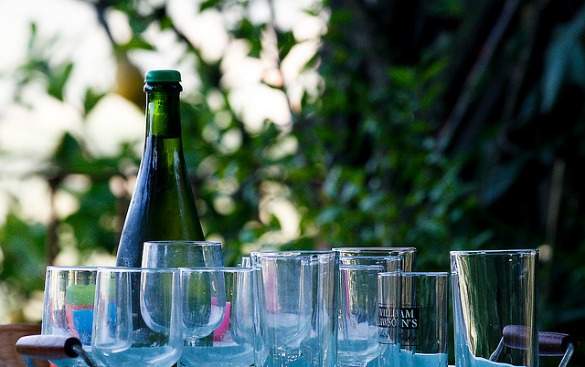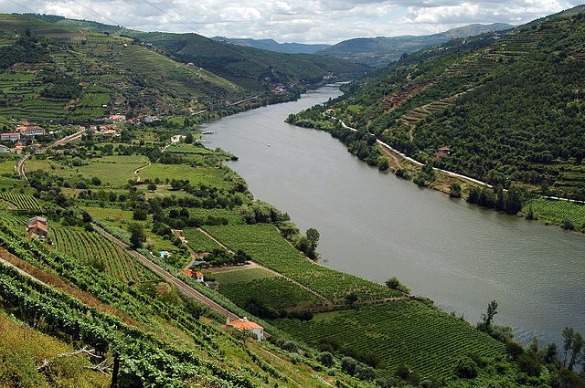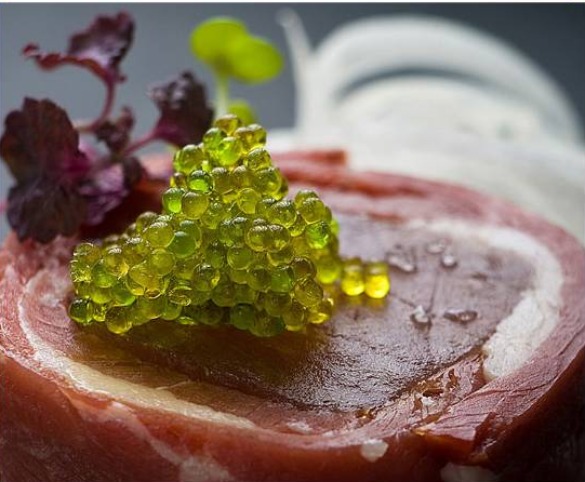Spain, Italy, France. These are the places most people first think of when they imagine going on a wine-tasting trip in Europe. Portugal seems to get lost in the shuffle, a side trip on the Iberian Peninsula, a long strip of land between Spain and the sea. But that’s about to change. Not only is Portugal one of the most affordable wine-tasting destinations in Western Europe, but in addition to producing an incredibly diverse array of quality wines, the country also offers enough other specialty drinks to keep your liver working overtime for weeks.
The country’s been getting big buzz lately; not only are Portugal’s wines top-notch, but the food is better than ever, with talented new chefs putting modern twists on traditional cuisine. Travel in Portugal is cheap, easy, and – for the moment at least – relatively uncrowded. Here are are few potent potables not to miss in Portugal.
Port
Portugal’s most famous and distinctive export, port is fortified wine. In the early 1700’s during England’s war with France, the citizens of England were deprived of French wine and looked to Portugal for a replacement. But the wine spoiled on the long trip, so they devised a method of fortifying it to increase its longevity. A neutral grape spirit, called aguardente, is added to the wine-making process to stop fermentation, keeping more of the natural sugar intact. The wines are then aged in barrels or bottles depending on the style – white port, ruby port, tawny port, late bottled vintage, colheita, blends, and vintage port.
In the 1700s and 1800s, the grapes for the port were grown in the Douro valley and then shipped to Porto where they were turned into port wine and aged in cellars (called caves) in the city, so they could easily be shipped down the river to the Atlantic and then on to England. Nowadays, the grapes are still grown in the Douro valley (in fact, they must be in order for the end product to be called port) but much of the cellar space is just for show. And as in the early days, many of the port houses are still owned by the English. Yet the tradition of port making – and port drinking – is decidedly Portuguese.
Where to drink it:
Porto, or Oporto, is the center of the port wine industry, though the port houses of Porto are technically in Vila Nova de Gaia, a short walk across the iron-trellised Ponte Luís I bridge, made by a partner of Eiffel. Here you’ll find over a dozen port houses, like the more touristy Sandeman, Taylor’s and Graham’s, along with lesser-known (and still Portuguese owned) Wiese and Krohn, Burmester, and Kopke, the oldest of the Porto port houses.
Some, like Croft and Taylor’s, offer free tours on which you’ll learn all about the port history and production, as well as the varying styles. Others like Sandeman may change a small fee for the tour and tasting. And still others, like Kopke, don’t offer any tours; instead visitors to Kopke can sample by the glass or order a port wine flight, which is paired with chocolates. Tastes range from 1-3 euros on up to 8-15 (and much, much higher) depending on the age and style. Or you can opt for a flight, like the one I had with two Portuguese wines and three port wines with accompanying chocolates for just 13 euros.
For one stop shopping, head to the Port Wine Institute in Porto (there is another one in Lisbon), where you can sample from hundreds of ports starting at 1 euro per glass while taking in beautiful views of the Douro river. To get closer to the source of the wine, you can also book a day cruise down the Douro. For the ultimate in luxury, stay at The Yeatman Hotel, a wine hotel on the Vila Nova de Gaia side. The hotel offers wine themed rooms with private patios overlooking Porto, just steps away from the port caves.
Try it with:
Most port is traditionally served after dinner with strong cheeses, chocolates, or fruit. White port is served as an apertif before dinner, with fruit or milder cheeses.
>> Find more famous local drinks to taste around the world
Ginjinha
Ginjinha is a liqueur made by infusing ginja berries in aguardente, the same grape spirit used to make port. The result is basically a cherry brandy served in a shot-sized portion for about 1 euro each. It’s said that a Galician friar left ginja berries in aguardente, adding sugar, water and cinnamon to make ginjinha. The drink that resulted was an immediate hit and soon became popular throughout Lisbon.
Where to drink it:
Ginjinha is found predominantly in its home city of Lisbon. You’ll find it at little cafes all over the city, but for the original, head to A Ginjinha, a tiny bar at Largo de Sao Domingos in Rossio square. This little storefront sells one thing – ginjinha – and is the oldest ginjinha bar in Lisbon. Order your drink “com ginja” (with a cherry in the glass) or “sem ginja’” for one without. To drink it like the Portuguese, sip slowly and the suck on the berry when you’re through.
Try it with:
Ginjinha isn’t typically drunk with food, but it does have a nice syrupy sour cherry taste that complements chocolate, so it is sometimes used in desserts, like in the heavenly chocolate cake dessert at Bocca in Lisbon. For a chocolate treat local to Lisbon, try “chocolate salami.” Melted chocolate is mixed with crushed up cookies, dried and then sliced; the end result looks like marbled salami but tastes like chocolate and cookies. You can find slices at most cafes and groceries stores, or try it topping a cupcake at Tease, Lisbon’s late-night “rock and roll bakery” in the Barrio Alto.
>> Read about other places to get drunk and call it a cultural encounter
Beer
The beer traditions of Portugal go back as far as ancient Roman times when Portugal was a province of the Roman empire. Today, Portugal is one of the largest exporters of beer and is now home to several large brewery corporations. The word for beer in Portuguese is cerveja, and the two main brands are Super Bock and Sagres, which you’ll see advertised all over the country. Sagres makes a pale lager, an auburn beer called Bohemia, a shandy beer called Limalight, and a dark beer, similar to a porter, called Preta. They also make several nonalcoholic beers. Rival Super Bock makes a lager, a dark wheat beer called Abadia, a pils flavored with lemon called Green, a pils with red currant called Tango, a Stout, and a non-alcoholic version called Twin.
Where to drink it:
Beer is readily available just about everywhere in Portugal – in restaurants and bars, in supermarkets and shops, and in coffee shops and cafes. As is common in other European countries, you’ll find many smaller bars and cafes are “closed shops” when it comes to beer – they only serve the beers of one brand, usually Sagres or Super Bock. Just look for the branding, usually apparent on patio chairs or through window decals and wall signs, and you’ll know which is which. In Porto, you can get a beer in a bar for about €1,50, in Lisbon and at nicer bars it may be more like 3-4 euros.
Try it with:
Typical Portuguese bar food includes sausages like linguiça and alheira, a smoked sausage made of pork, poultry meat, wheat bread and olive oil, seasoned with salt, garlic and paprika; deep fried salt cod fitters; pasties filled with shrimp or suckling pig; and in Porto, the ubiquitous and slightly monstrous Francesinha (or Little Frenchie).
The Francesinha is a meaty work of artery-clogging art. A bastardized Portuguese version of the croque monsieur, it’s made with bread, wet-cured ham, linguiça, and steak or roast meat, covered with melted cheese and topped with a thick tomato and beer sauce. Some versions also have mushrooms, shrimp or egg and most are served with french fries for 7-11 euros each. After one too many beers, nothing will soak up the booze in your belly like a Francesinha.
>> Read about how you can travel around the world though the taste of a beer
>> Check out the best selling beers in the world
Portuguese wine
Not all Portuguese wine is port. Portugal actually has over 25 DOC (or Denominação de Origem Controlada) areas of protected origin for wines. Two of its wine producing regions are protected by UNESCO as World Heritage: the Douro Valley Wine Region and Pico Island Wine Region. Among the most prolific and well-know of Portugal’s wine regions are the Douro, the Alentejo, the Algarve, Vinho Verde, and Madeira.
The vinho verde wines, or green vines, are the most exported of the Portuguese wines. Not actually green, they are not aged, come in red and white varieties and have a light effervescence. Douro wines come from the same region as port wines and have many of the same characteristics; they are often sold as table wines for everyday drinking. Alentejo wines from the south come from an area most known for its cork production but which has recently been garnering attention for its quality wines. And the Algarve is also known for its excellent red wines.
Where to drink it:
You can find wines from throughout Portugal all over the country, in bars and cafes in big cities and small towns. If you want to tour the vineyards, it’s easy to arrange wine-tasting trips from most major cities. In Porto you can visit the Douro by train, boat or car on a day trip. And the Alentejo and Algarve are each 2-3 hours from Lisbon.
In Lisbon, stop by the ViniPortugal (located at the Ministry of Agriculture in Praça do Comerçio) for a free wine tasting. A rotating selection of wines from different regions around Portugal is available for visitors to taste, free of charge (though you will be asked to fill out a survey) Tuesday-Saturday, between 11am and 7pm.
A bottle of decent wine can be had at a restaurant or bar for 8-15 euros, with higher quality bottles ranging from 20-30 euros. If you stock up at the local wine shop, you can expect to pay just a few euros for a nice bottle of table wine.
Try it with:
Portuguese wines rum the gamut from light and fruity to full bodied and rich, and pair well with a variety of foods, including traditional sausages and cheeses. And of course, you can’t forget the cod, or bacalhau. Cod is on every menu is Portugal, served salted and dried, grilled or seared, fried into fritters, with spicy piri piri sauce, and even with eggs.
Portuguese wines go very well with these traditional dishes, but they also enhance a more modern meal as well, as the chefs of Portugal seem to be intent on proving. Portugal has quietly been undergoing a culinary revolution as of late, with more and more acclaimed restaurants taking center stage in Porto, Lisbon and beyond.
For a modern take on Portuguese wines that won’t break the bank, check out Bocca Restaurant and Bar in Lisbon, where appetizers like potato soup with red wine braised pork cheek or carpaccio of muscovy duck go for 10-14 euros and entrees such as salt cod with butter-braised tongues, poached egg and violet potato foam or loin and rack of lamb served on a bed of pumpkin purée, aubergine caviar and shallot confit range from 22-30 euros and are served alongside the best Portuguese wines in an airy modern space.
>> Read about the other cheapest destinations for wine tasting
>> Discover six places in Europe you never thought to go wine tasting
Want more? Eat and drink your way around other destinations.
Ready to go? Plan your trip with our Portugal travel guide, and look for flights to Portugal, and find hotels in Portugal.
Photos by: Porto – b00nj, Ginjinha 1 – Pedro Mora Penheiro, Ginjinha 2 – Namik el Bosnio, beer 1- Bernt Rostad, beer 2- sukkulaati, wine 1 – lanier67, wine 2 – Francisco Oliveira, final photo from Bocca, all others courtesy of the author and may not be used without permission
